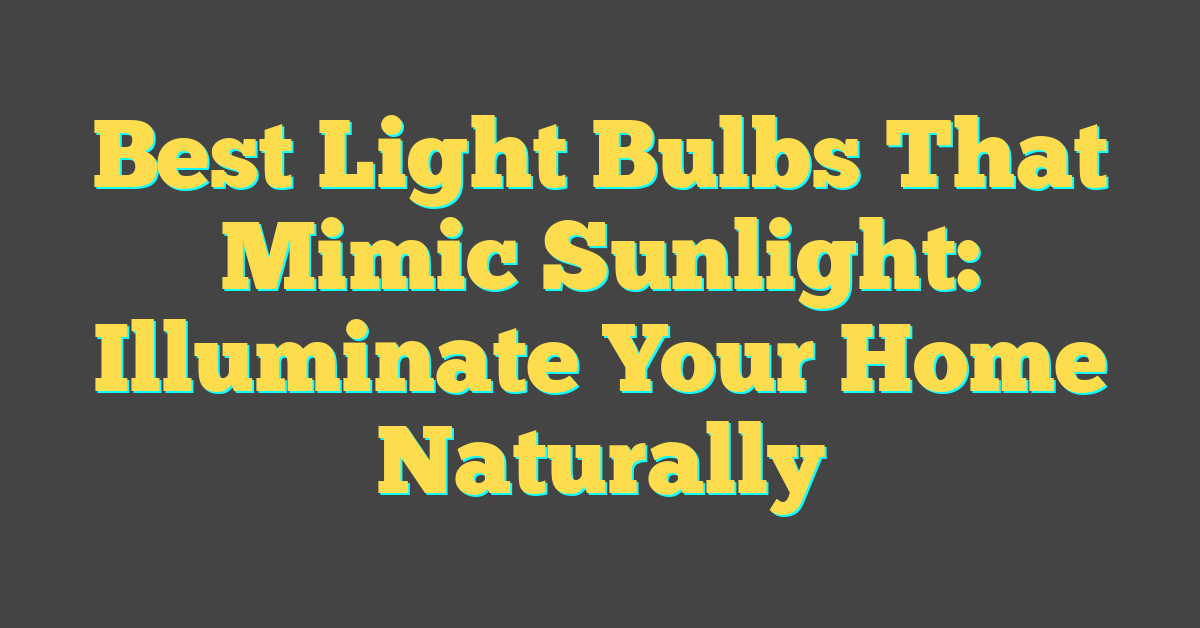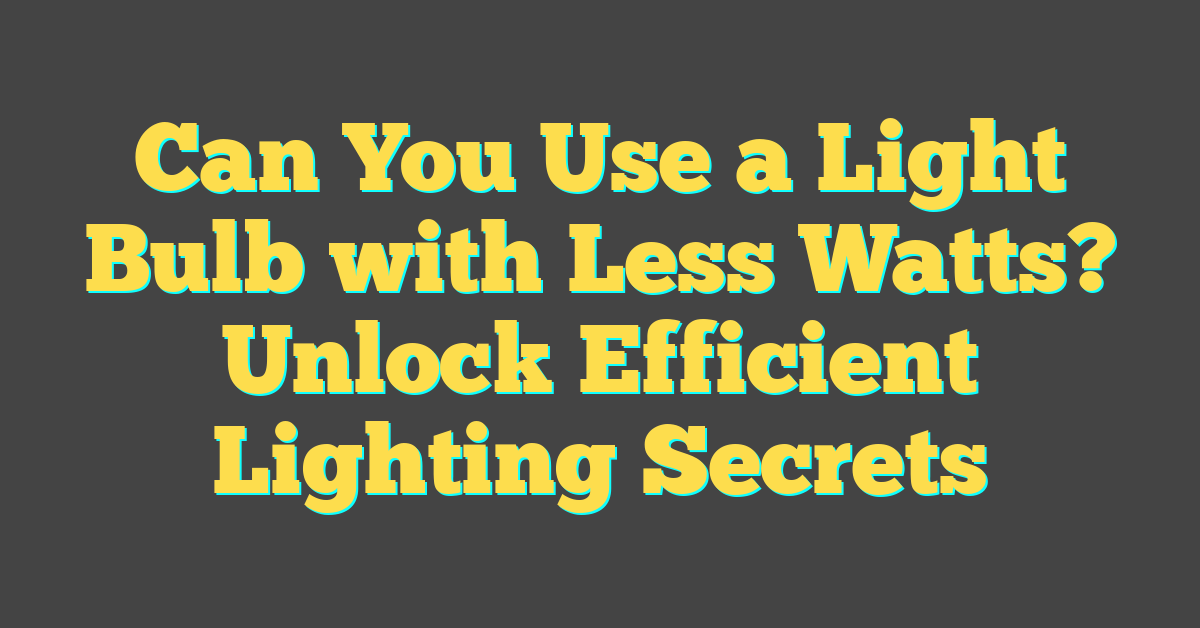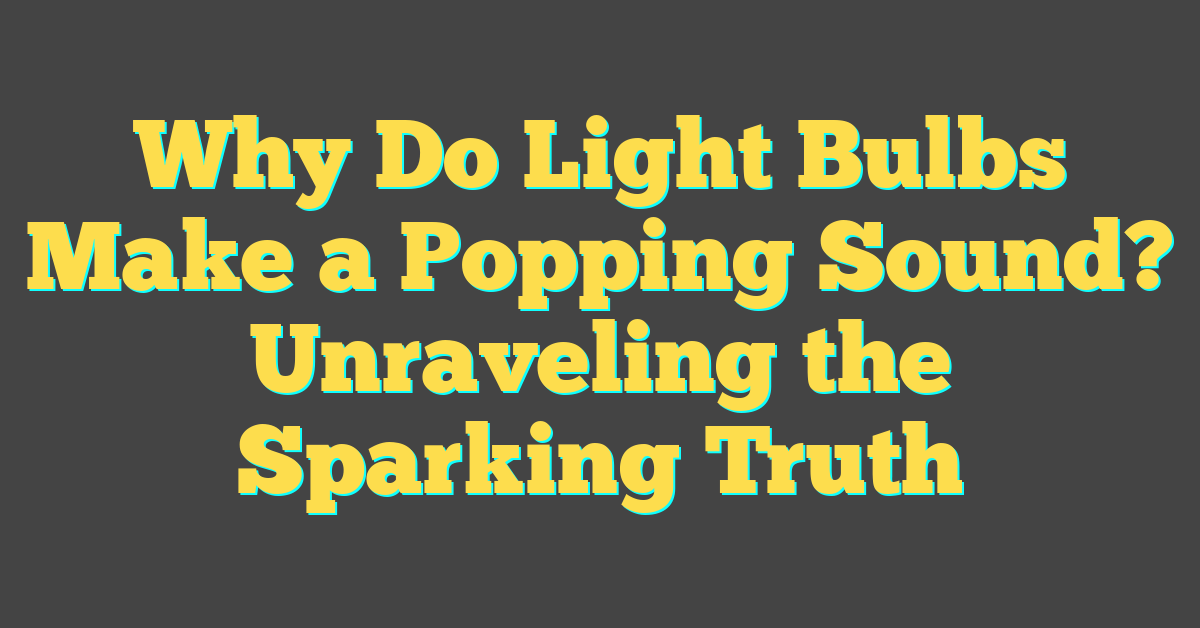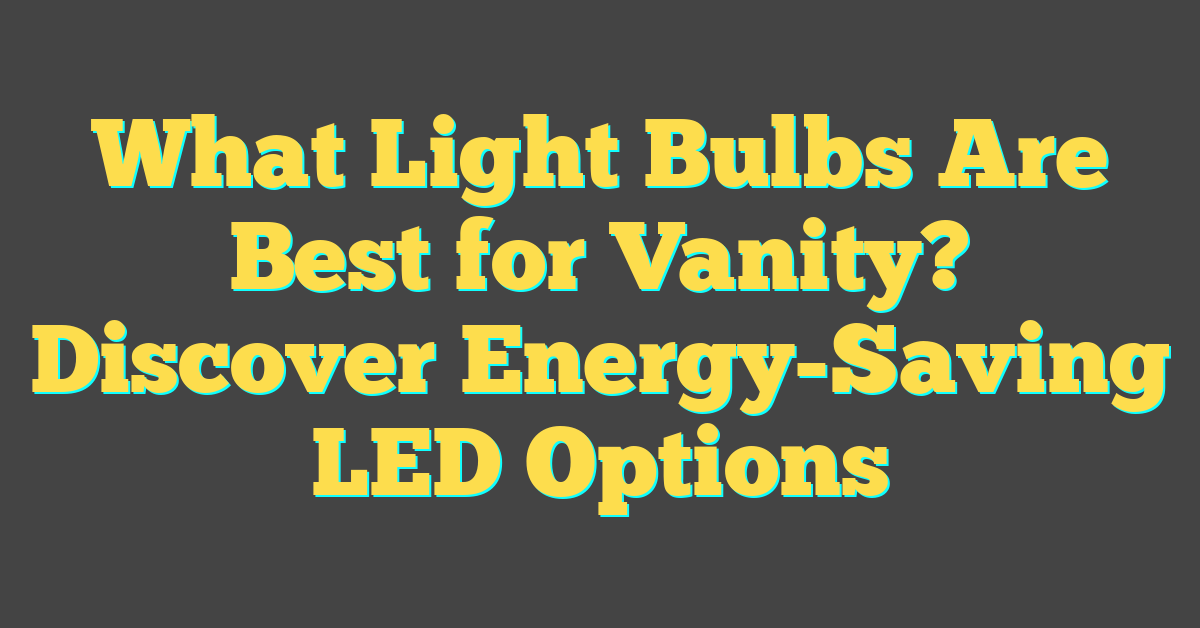The quest for creating indoor environments that align closely with the natural world has brought about innovations in lighting technology, particularly light bulbs designed to mimic the beneficial qualities of sunlight. These special bulbs are crucial in settings where natural light is scarce, helping to maintain circadian rhythms and providing a more pleasant living or working environment.


Choosing the right light bulb to recreate the essence of natural sunlight involves understanding various technical specifications and health benefits. Selecting a light bulb that replicates the full spectrum of sunlight can be a game-changer, especially for those who experience less exposure to daylight due to geographic location or lifestyle.
Key Takeaways
- Light bulbs that mimic sunlight can enhance indoor environments and support circadian rhythms.
- Understanding bulb specifications and health benefits is key to choosing the right sunlight-mimicking bulb.
- Full spectrum light bulbs bridge the gap between indoor lighting and natural daylight exposure.
Understanding Light Bulbs That Mimic Sunlight
https://www.youtube.com/watch?v=lwp9wAKzRtc&embed=true
In your quest for better indoor lighting, it’s crucial to know how some light bulbs are specially designed to emulate the beneficial qualities of natural sunlight.
Benefits of Natural Sunlight
Natural sunlight is fundamental to your well-being, offering benefits such as vitamin D synthesis, improved mood, and better sleep patterns. By replicating the full spectrum of light that the sun provides, light bulbs designed to mimic this spectrum can help maintain your body’s natural rhythm even when you’re inside.
What Is Full-Spectrum Light?
Full-spectrum light bulbs strive to mimic the color temperature and spectrum of natural sunlight. This means these bulbs provide a wide range of the visible light spectrum, including both blue light responsible for alertness and the softer hues that signal your body to wind down. They can have a significant impact on your indoor environment, affecting everything from how you see colors to how you feel throughout the day.
Health Benefits of Sunlight Simulation
https://www.youtube.com/watch?v=UF0nqolsNZc&embed=true
Light bulbs that mimic sunlight can have profound effects on your well-being. They help combat mood-related disorders, enhance your sleep patterns, and aid in vitamin D synthesis—essentially bringing the benefits of the sun indoors.
Fighting Seasonal Affective Disorder
Seasonal Affective Disorder (SAD) is a type of depression that occurs at certain times of the year, usually in the fall or winter. Sunlight-simulating bulbs provide light therapy, which can alleviate symptoms of SAD as they mimic the natural light you miss during shorter, darker days. By using these bulbs, especially during the morning, you can help reset your internal clock and mitigate the effects of SAD.
Enhancing Mood and Sleep Patterns
Regular exposure to light that mimics sunlight can lead to improved mood and sleep. This is particularly important if you spend a lot of time indoors. Even when it’s not sunny outside, these bulbs can support your body’s natural circadian rhythm, assisting in the regulation of melatonin production and enhancing your mood.
Promoting Vitamin D Production
Although sun lamps do not directly cause your skin to produce Vitamin D, they are designed to mimic natural sunlight which promotes vitamin D production in the body. This is crucial for maintaining healthy bones and supporting immune function. Be mindful that for vitamin D synthesis, you need exposure to UVB rays, which most UV-free light therapy lamps don’t provide. Yet, some specifically designed bulbs do help with vitamin D production, so it’s worthwhile to consider those if this is your goal.
Technical Specifications of Sunlight Imitating Bulbs
https://www.youtube.com/watch?v=vrMWHmPg0h8&embed=true
When you’re looking for bulbs that mimic sunlight, understanding their technical specs is crucial. Aspects such as lux levels, color temperature, and safety features make all the difference in creating that natural sunlight feel in your space.
Understanding Lux and Color Temperature
Lux measures the intensity of light that hits a surface, which for sunlight imitating bulbs typically ranges from 2,500 to 10,000 lux, mirroring the light you’d experience on a clear day. The color temperature of these bulbs is equally important; it indicates the warmth or coolness of the light emitted. Measured in Kelvin (K), sunlight bulbs usually span from 5000K to 6500K, resembling noon daylight (bright and blueish) to ensure that you receive a natural and balanced light.
- Ideal Lux Level: 2,500 – 10,000 lux
- Color Temperature Range: 5,000K – 6,500K
UV Filters and Safety Compliance
« Best Way to Change High Light Bulbs: Safe & Simple Tips
Best Way to Change Light Bulbs: A Quick and Safe Guide »
Since sunlight bulbs are meant to replicate natural sunlight, it’s essential they do so safely. UV filters become a significant component; they protect you from the potentially harmful ultraviolet rays while still allowing for the benefits of mimicked natural sunlight. Moreover, compliance with Food and Drug Administration (FDA) guidelines ensures that these light bulbs are checked for safety standards and regulated to prevent any health risks.
- UV Filter: Included to simulate sunlight without UV risks
- FDA Compliance: Confirms safety and efficiency
Remember to check for these specifications when you’re in the market for a sunlight imitating bulb to ensure the product you choose is both effective and safe for daily use.
Selecting the Right Bulb
https://www.youtube.com/watch?v=Ei5vS-g4DTo&embed=true
When you’re on the hunt for the perfect bulb to bring natural sunlight vibes into your space, focusing on two key aspects will guide your decision: brightness levels tailored to your room’s surface area, and the comfort of flicker-free, glare-free lighting.
Assessing Brightness Levels and Surface Area
The right brightness level of a bulb is measured in lumens, and finding the ideal one depends on the surface area of your room. A larger room demands a bulb with high lumens to adequately simulate sunlight. For small to medium rooms, a bulb emitting around 800 lumens provides a satisfactory daylight feel similar to what’s described for full spectrum light bulbs.
- Smaller Rooms (< 50 sq ft): 450-800 lumens
- Medium Rooms (50-100 sq ft): 800-1,600 lumens
- Larger Rooms (> 100 sq ft): 1,600+ lumens
Evaluating Flicker-Free and Glare-Free Features
Choosing a flicker-free bulb ensures a steady light source that is gentle on the eyes, crucial for replicating the calmness of natural sunlight. Additionally, glare-free options reduce the harshness often associated with artificial lighting. Look for bulbs with a high CRI (Color Rendering Index) for true-to-life colors; these often boast reduced glare and a more soothing light output. The Shanpu Z0850/55Pro and the GE Sun-Filled bulbs are top market picks that specialize in flicker-free and glare-free experiences.
Top Picks for Natural Sunlight Bulbs

When seeking the best light bulbs to bring the essence of sunlight into your home, it’s essential to consider their ability to mimic the full spectrum of natural light. This section lays out top-rated options and the pros and cons of different brands to guide you in your choice.
Reviewing Popular Sunlight Mimicking Bulbs
Shanpu Z0850/55Pro
This bulb stands out for its impressive replication of sunlight spectrum, making it a preferred choice for those who prioritize light quality.1
GE Sun-Filled Bulbs
GE offers a bulb designed to closely imitate natural sunlight, catering to users who want to maintain a natural feel indoors.2
Sylvania LED TruWave Natural Series
Sought for its calming white light, the Sylvania LED TruWave is touted for making environments feel more natural and less artificially lit.3
Miracle LED Boost
Offering a balance of performance and cost-effectiveness, the Miracle LED Boost is noted for its natural light output and energy efficiency.4
Note: All bulbs mentioned are examples and come with different specifications that cater to various lighting needs.
Pros and Cons of Different Brands
Shanpu Z0850/55Pro
Pros: High fidelity color rendering.
Cons: May be on the higher end of the price spectrum.GE Sun-Filled Bulbs
Pros: Trusted brand with a focus on quality.
Cons: Limited variety in terms of wattage and shapes.Sylvania LED TruWave Natural Series
Pros: Caters to general use with a comfortable white hue.
Cons: Some may find the light too soft for tasks requiring bright light.Miracle LED Boost
Pros: Energy-saving and cost-effective.
Cons: May not match the brightness of other full spectrum bulbs.
In addition to helping set the right mood, many of these bulbs are also compatible with light therapy lamps, providing you with the potential health benefits associated with exposure to full-spectrum light. Remember to consider your specific needs for brightness, energy consumption, and whether the bulb will be used for therapeutic purposes or simply for ambient lighting.
Light Therapy Lamps vs. Sunlight Bulbs

When considering light sources that compensate for lack of sunlight, both light therapy lamps and sunlight bulbs come to mind. Each offers distinct benefits and caters to different needs, allowing you to personalize your approach to light supplementation.
Comparisons and Use Cases
Light Therapy Lamps
Known for their use in treating Seasonal Affective Disorder (SAD), light therapy lamps like the Verilux HappyLight Luxe emit a spectrum of light that mimics natural daylight. These are not just ordinary lamps; they are specifically designed to provide therapeutic benefits.
- Recommended Lux: 10,000 lux is the standard for effective light therapy.
- Timing: Typically used for about 30 minutes a day, these lamps can help regulate your circadian rhythms and improve mood.
- Safety Features: Look for UV filtration to protect your skin and eyes.
Sunlight Bulbs
On the other hand, sunlight bulbs are designed to replicate the appearance of sunlight for indoor lighting, contributing to a more natural ambiance. While they can improve the general atmosphere of a space, they don’t necessarily offer the therapeutic benefits of light therapy lamps.
- Color Temperature: These bulbs often have a color temperature rated in Kelvin, with a range of about 5,000 K to 6,500 K to resemble daylight.
- Use: Ideal for office spaces, studios, or homes where natural light is scarce.
Whether you’re combating the winter blues with an effective light therapy session or simply looking to brighten up your home with lighting that resembles daylight, the key is to choose a product that fits your specific needs. Light therapy lamps are a go-to for therapeutic needs, whereas sunlight bulbs serve more general lighting purposes.
Innovative Light Bulb Solutions

As you look to brighten your home with the warmth of the sun, innovative lighting technologies using nanotechnology and design principles have emerged to provide you with an atmosphere that’s as close to a Mediterranean sky as possible.
Nanotechnology in Light Bulbs
Recent advancements have led to the integration of nanoparticles in light bulb design. For example, new LED panel technology uses nanoparticles that scatter light, replicating the natural dynamics of sunlight. This innovation closely mimics the daylight spectrum through a process known as Rayleigh scattering.
The Coelux Effect and Mediterranean Atmosphere
The Coelux lighting system creates an artificial sky that offers the illusion of real sunlight, infused with the essence of a Mediterranean atmosphere. By emulating the color and appearance of the sky in the region, the Coelux effect gives your spaces the warm, uplifting feeling of a sunny day in the Mediterranean, enhancing both your environment and mood.
Practical Applications and Settings

When seeking the best light bulbs to mimic sunlight, it’s important to consider your environment and the task at hand. The right lighting can reduce eye strain and create a conducive atmosphere for productivity or relaxation.
For Work and Study
- Eye Strain: To prevent eye strain, incorporate light boxes near your workspace. These simulate natural light and can improve focus while reducing the fatigue associated with artificial lighting.
- Concentration: A sun lamp on your desk provides a bright, focused light that keeps you alert and has been shown to boost concentration during work and study sessions.
Home Decor and Ambiance
- Living Spaces: Introduce bulbs like the GE Sun-Filled to create a natural and welcoming atmosphere in your living areas. Such full-spectrum bulbs are designed to closely mimic the sun’s natural light.
- Mood Setting: Use smart bulbs with adjustable settings for a personalized experience. Set them to imitate the sunrise or sunset to naturally synchronize with your body’s rhythm, which can be especially beneficial for better sleep, as explained by Consumer Reports.
Integrating Bulbs with Lifestyle
https://www.youtube.com/watch?v=Rg3zI1Oyk3c&embed=true
Incorporating light bulbs that mimic sunlight into your daily routine can enhance your well-being, particularly if you’re managing sleep disorders or seeking a more natural wake-up method. For those with on-the-go lifestyles, portable solutions offer sunlight simulation wherever your travels take you.
Alarm Clocks with Light Therapy
Wake-Up Naturally: Alarm clocks equipped with light therapy gradually illuminate your bedroom, simulating the sunrise to align with your body’s circadian rhythm. By choosing bulbs that mimic natural sunlight for your alarm clock, your body can ease into wakefulness, potentially improving sleep quality and mood.
Popular Features:
- Gradual light increase
- Snooze function with light
- Multiple alarm profiles
Portable Options for Travelers
Stay Balanced While Traveling: For those who often travel, portable light therapy devices can be a game-changer. Compact and easy to pack, these devices help regulate your sleep patterns and provide a sense of consistency despite changing time zones.
Traveler’s Checklist:
- Compact design
- Rechargeable battery or USB powered
- Adjustable brightness and color temperature
By integrating these sunlight-mimicking bulbs into your lifestyle gadgets, you’re taking a step towards better sleep and vibrant mornings no matter where you are.
Addressing the Blue Light Controversy
https://www.youtube.com/watch?v=xJ0DdVff3W8&embed=true
When considering light bulbs that mimic natural sunlight, it’s important to understand the role of blue light. While fundamental to mimicking daylight, blue light has been surrounded by discussions concerning its effect on sleep and eye health.
Blue Light: Harmful or Helpful?
Blue light is a component of visible light with both beneficial and harmful aspects. It’s crucial for regulating your natural sleep-wake cycles—a process known as your circadian rhythm. Exposure to blue light during daytime hours helps maintain a healthy circadian rhythm, making you feel more alert and improving mood. However, excess exposure, especially later in the day, can disrupt your sleep patterns, potentially leading to sleep-related issues.
Advantages:
- Aids in circadian rhythm regulation
- Boosts alertness
Disadvantages:
- May disrupt sleep if experienced excessively at night
- Could contribute to eye strain
Opting for bulbs with a balanced spectrum that includes blue light can be beneficial during the day. It’s essential, though, to moderate exposure as evening approaches to ensure it doesn’t hinder your sleep.
Protecting Eyes from Blue Light Exposure
To protect your eyes from blue light exposure, especially when using devices or bulbs that emit a significant amount, consider the following tips:
- Employ bulbs with an adjustable color temperature for evening use to reduce blue light.
- Anticipate eye strain by taking regular breaks using the 20-20-20 rule: every 20 minutes, look at something 20 feet away for at least 20 seconds.
- Utilize glasses with blue light filtering capabilities if you spend extensive time in front of screens or under artificial lights capable of emitting blue light.
By consciously adjusting the light sources around you, you can mitigate the potential negative effects of blue light while reaping its benefits during daytime hours.
Guidelines for Safe Usage

When selecting light bulbs that mimic sunlight, it’s crucial to prioritize your safety. Following guidelines ensure you get the best experience without compromising well-being.
Understanding Manufacturer’s Recommendations
Read Carefully: Always start by reading the manufacturer’s instructions. Light bulbs designed to mimic sunlight, such as the Verilux HappyLight Luxe, come with specific guidelines related to exposure times and distances that are optimal for their use.
Exposure Time: Typically, manufacturers suggest using these lamps for about 20-30 minutes daily. This recommendation is crucial in ensuring that you do not overexpose yourself to intense light, which could lead to discomfort or other issues.
Adhering to FDA Regulations
Not FDA Regulated: Keep in mind that, while light therapy lamps like the Philips SmartSleep Light Therapy Lamp can be very effective, they aren’t regulated by the Food and Drug Administration (FDA) for Seasonal Affective Disorder (SAD) treatment. However, in terms of safety, lamps sold in the U.S. must meet certain safety standards.
Quality and Compliance: Look for light therapy lamps that have been tested for safety and are compliant with other industry standards. This could indicate a higher quality product that you can use with greater assurance.




